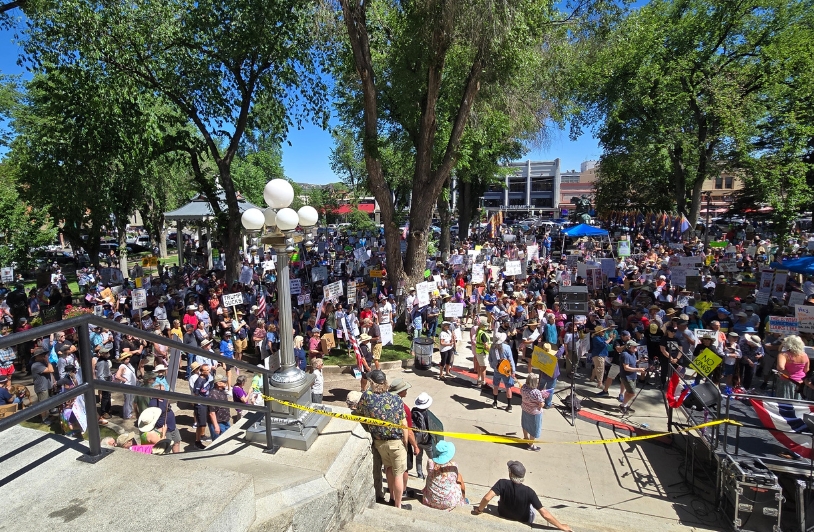Nonviolent but Mildly Disruptive Is Found To Be Most Effective
The “No Kings” organization has announced rallies across the country to be held on October 18th. The previous rally on Jun 14th were certainly effective in turnout and therefore in making a statement about how popular protest against the current administration is. The upcoming ones will likely be as effective but there may be a way to have even more impact.
The previous rally, according to a piece by Encyclopedia Britannica, had events in 2,100 locations. There were in all 50 states and even a few in the U.K. and elsewhere. The ACLU, one of the sponsors, estimated five million people attended. One serious effort to gather numbers on as many rallies as possible and published at the Harvard Dataverse site found similar numbers. DCReport covered it in a piece focusing on one city, a mostly conservative small city, Prescott, Arizona.
There’s no doubt that those kinds of numbers are effective. Can the desire by so many to push back on authoritarian influences be even more effective?
The American Psychological Association has posted some interesting research on how best to influence the most people. This research was done shortly after the protests that followed the death of George Floyd at the hands of a police officer. They found three things.
One, that while violent protests and seriously disruptive riots can sometimes put pressure on leaders to take some action on the underlying issue, those kinds of actions are the weakest at bringing more people onboard with the given cause.
Two, that nonviolent protests do better, convince more people of the cause, and draw more into being part of it.
Three, that there is a variation that is even more effective. That is combining nonviolence with what they refer to as non-normative steps. That is when people don’t behave entirely according to the rules or the normal standards. Things like, “striking, boycotting, engaging in sit-ins, or otherwise occupying public space” according to Eran Halperin Ph.D., one of the authors, whose lab studies, “intergroup conflict to develop interventions that promote social change”.
They studied people’s reactions after a number of protest events of different types and found that this third category had notably better results not only at recruiting more people to the cause but in particular people who had been skeptical.
Although it may be difficult to translate simple protest into sit-ins and boycotts, as psychiatrist Dr. H. Steven Moffic wrote in looking at the same study, some degree of the same effect might be reached simply through creative novelty. He gives the example of the Yippies, during President Nixon’s campaign, nominating a pig for president at the Democratic presidential convention. Partly it is just a way to generate news coverage but it also gives people a sense of being part of something that has action, that is something more than just protests to make a statement.
The No Kings rally will likely be effective and a great way to show how many people have similar objections to the current environment. Even farther reaching effect is possible.
DONATE TO PROTECT YOUR RIGHTS AS CITIZENS, VOTERS, INVESTORS, AND CONSUMERS




